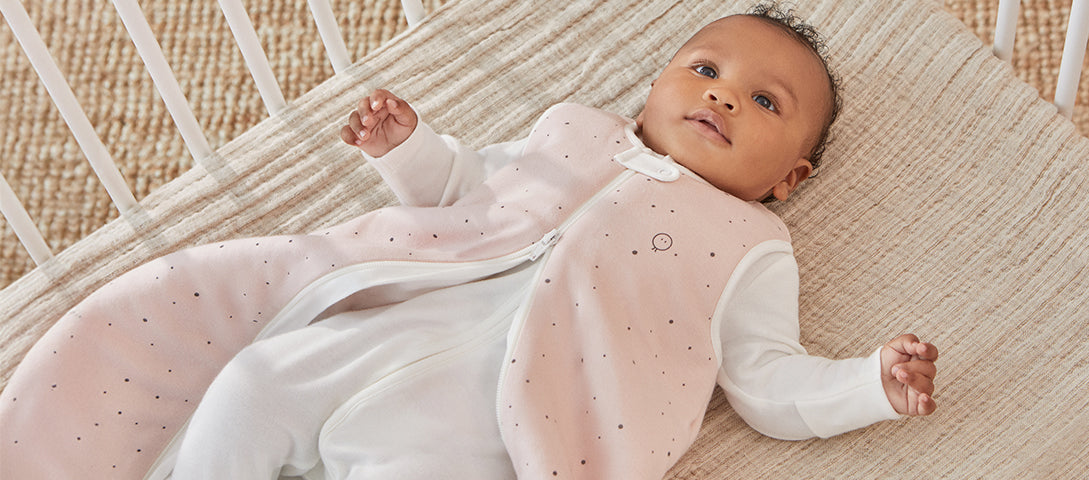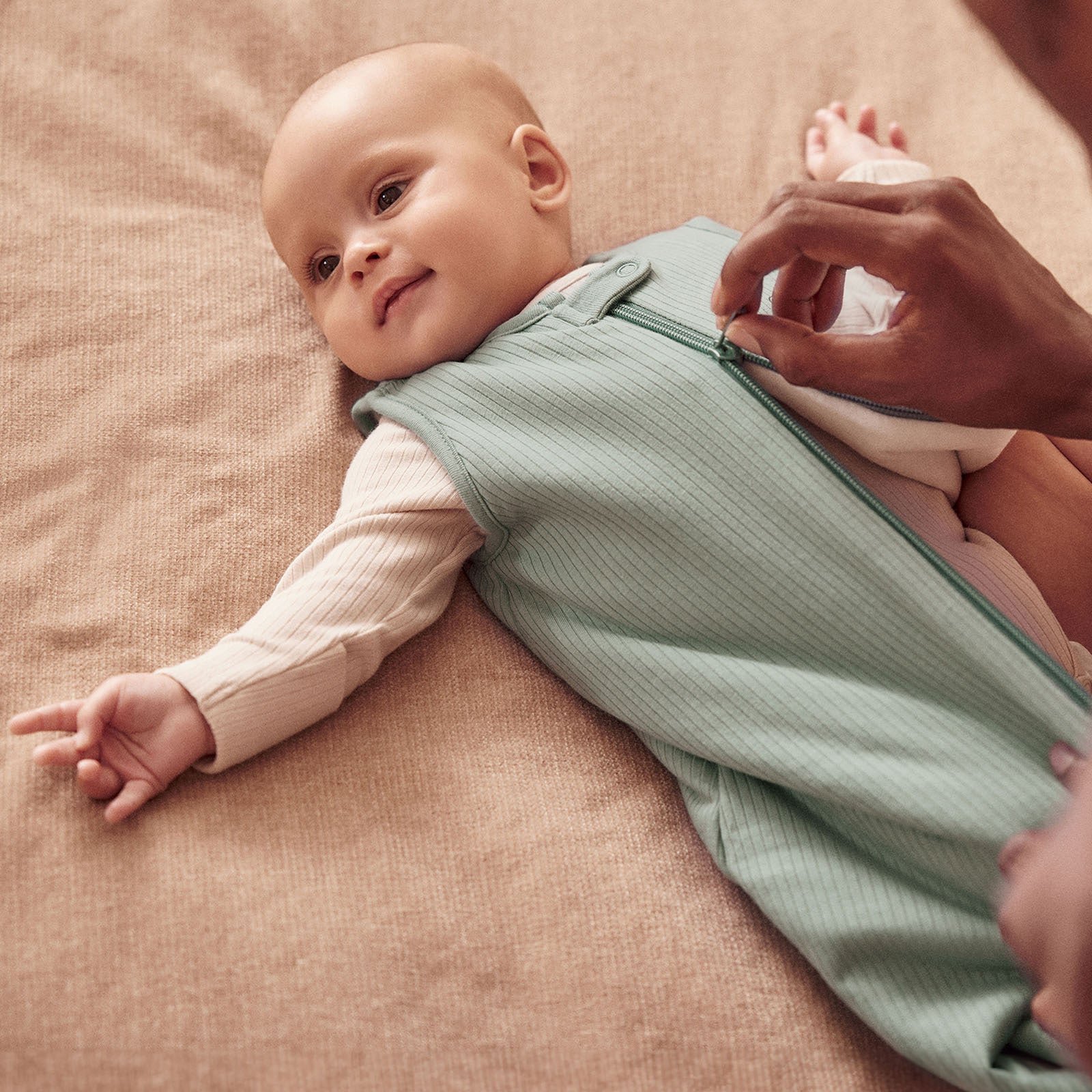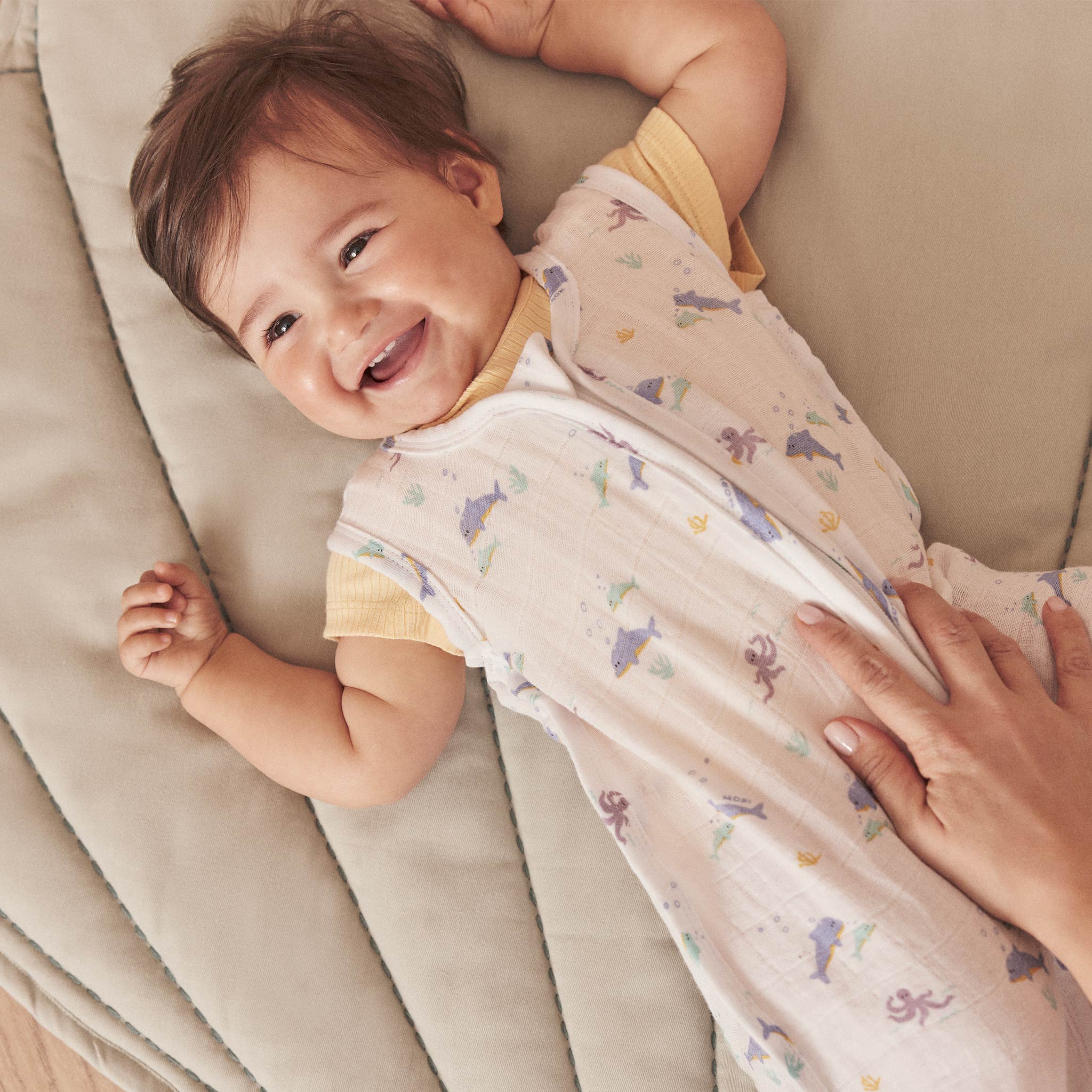

[]
Switch to
USD
?

Dressing your baby for sleep can feel like a guessing game when balancing comfort and safety. It’s not just about keeping them cozy—overheating can pose risks, so finding that balance between warmth and breathability is essential.
Finding that sweet spot where your baby is snug but not too warm is key. Let’s dive into the key things to consider when dressing your baby for a restful night’s sleep.

When dressing your baby for sleep, it’s key to strike the right balance between comfort and safety.
During spring and fall, temperatures can fluctuate significantly, making it important to layer your baby’s sleepwear for consistent comfort throughout the night. With room temperatures typically ranging between 60-70°F, you’ll want to be prepared for potential changes in warmth.
Start with a solid base layer, such as the MORI Long Sleeve Bodysuit, made from soft, breathable bamboo fabric. This layer provides gentle warmth without causing your baby to overheat, making it perfect for those cooler nights.
For added comfort and flexibility, pair the bodysuit with a 1.5 TOG Clever sleep sack. This light sleep sack helps maintain a cozy temperature while allowing your baby to stay comfortable as the room temperature shifts throughout the night.
During the summer months, warm nights require a lighter approach to dressing your baby for sleep. With temperatures rising above 75°F, it’s essential to prevent overheating by keeping things minimal and breathable.
A simple short-sleeve bodysuit or a diaper can be enough to keep your baby comfortable in extreme heat. Less is more when the room is warm, as it helps your baby stay cool and avoids unnecessary layers that could cause discomfort.
Consider adding a 0.5 TOG Clever sleep sack if you need an extra layer. It's light and breathable, providing a touch of warmth without trapping heat, so your baby remains cozy but not overheated throughout the night.
During colder nights, more layers are needed to ensure your baby stays warm and comfortable. When room temperatures dip below 68°F, it’s important to dress your little one in clothing that provides enough warmth without restricting their movement.
Begin with a solid base layer, such as the MORI Long Sleeve Bodysuit or footed pajamas made from warm, breathable fabrics. These pieces offer the right balance of warmth and airflow to prevent overheating while keeping your baby snug.
For extra coziness, add a 2.5 TOG Clever sleep sack to provide an additional layer of warmth. If temperatures drop even further, you can easily layer a sleep shirt or another top over the bodysuit to keep your baby extra toasty throughout the night
In seasons like late spring to early summer or late fall to early winter, temperatures can shift unpredictably, making it essential to dress your baby in flexible layers. With room temperatures ranging from 60-75°F, your goal is to keep your little one comfortable without overheating or underdressing.
Start with a Long Sleeve Bodysuit, which provides gentle warmth while being breathable. Layer this with a 1.5 TOG Clever sleep sack for an added, versatile layer that works well for varying temperatures. This combination ensures your baby stays cozy, even when the temperature changes.
For quick adjustments during the night, keep a lightweight blanket or an extra layer nearby. If the room cools down, you can easily add a layer to maintain your baby’s comfort without needing to redress them entirely.
A long-sleeve bodysuit with a swaddle or newborn sleep sack works best. The Newborn Swaddle Bag paired with a Long Sleeve Bodysuit ensures your baby stays snug and comfortable. As your baby grows, transition to pajamas and sleep sack for more freedom of movement.
As your baby becomes more mobile, fewer layers are typically preferred. A long-sleeve onesie or footed pajamas with a sleep sack should be enough. The bamboo zip-up pajamas paired with the 1.5 TOG Clever sleep sack provide the right balance of warmth and mobility for most temperatures. Plus, their secure design ensures that babies can't kick them off, making them perfect for active little ones who love to move around during the night.
While comfort is important, safety is the priority. Overheating is a known risk factor for Sudden Infant Death Syndrome (SIDS), so follow these tips:
1. Don’t over-layer: Dress your baby in one more layer than you would wear to bed.
2. Check for signs of overheating: Feel your baby’s chest, neck, or back. If they feel hot or sweaty, they are likely too warm.
3. Use breathable fabrics: Organic cotton or bamboo, like those used in MORI’s sleepwear, help regulate body temperature.
4. Lay baby on their back: Always place your baby on their back to sleep, as the American Academy of Pediatrics (AAP) recommends.
5. Using a sleep sack instead of loose blankets: This is part of safe sleep practices recommended to reduce the risk of Sudden Infant Death Syndrome (SIDS).
6. Keep the crib clear: Remove pillows, stuffed animals, and other loose items from the crib. A fitted sheet and a sleep sack are all your baby needs.
7. Monitor room temperature: Keep the room between 68-72°F (20-22°C) and adjust baby sleep layers accordingly.
Chat with MORI
Hello! I’m MORI’s virtual assistant
Customers often ask these questions:
How to care for MORI products?
I can also help with finding answers to other questions. How can I help you today?



